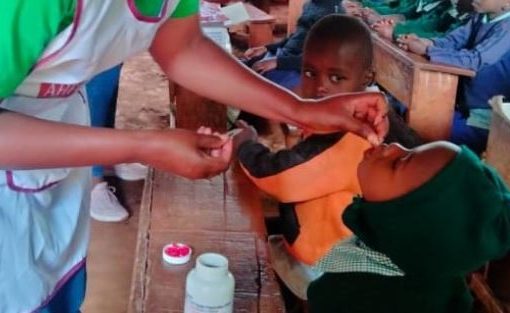The National Syndemic Diseases Control Council (NSDCC) has unveiled a seven-year action framework to promote the health and well-being of the male gender.
The launch of the 2024-2030 framework was preceded by a sensitization meeting for religious leaders drawn from Mombasa, Kwale, Kilifi, Tana River, Lamu, and Taita Taveta counties on prevention and treatment for HIV, drugs, alcohol, and substance abuse organised by NSDCC and the Office of the Spouse of the Deputy President (OSDP).

The meeting was graced by the Spouse of the Deputy President, Pastor Dorcas Rigathi, and the Principal Secretary (PS) for Medical Services, Harry Kimtai, in Mombasa.
The framework is poised to address the challenges affecting the health and well-being of men.
Pastor Dorcas Rigathi, who was hailed for her efforts to save the boy child, urged religious leaders to be at the forefront of ending stigma for persons living with HIV/AIDS in their sermons.
PS Kimtai reiterated the government’s commitment to end HIV/AIDS as a public health threat by 2030.
The PS noted that 59 per cent of the country’s population is made up of young people below the age of 24, where most of the new HIV infections are occurring.
“While girls and women are disproportionately affected by HIV due to biological and structural factors, in 2022, there were about 5,122 infections among men and boys aged 15 and above,” disclosed PS Kimtai.
He added that the government’s efforts to end AIDs are demonstrated by the increased access to antiretroviral treatment, from 656,369 in 2013 to 1,294,339.
However, the country still loses many boys and men to the disease. In 2023 and 2023 reports, despite women and girls making up the greater proportion of those living with HIV at 898,618 (65 per cent), men report the higher proportion of AIDS-related deaths and morbidity.
“About 7,633 males aged 15 years and older died of AIDS-related causes, representing 47 per cent of adult HIV mortality,” said PS Kimtai.
The PS attributed the scenario to poor health-seeking behaviour among men, including early diagnosis. In 2023, of the 5.9 million HIV tests conducted, only 28 per cent were men.
“Lack of early diagnosis means that we are accessing men when it’s too late, often when they have developed other complications such as tuberculosis due to low immunity,” stated the PS, adding that the country has a high burden of HIV and Tuberculosis.

He further urged the religious leaders to foster an environment of compassion and understanding, dispelling myths and misconceptions, and promoting the importance of meaningful engagement with HIV services and all-round health-seeking behaviour among boys and men.
Admittedly, the Medical Services PS revealed that the country has an estimated population of 26,673 people who inject drugs, with an HIV prevalence of 18.7 per cent, close to four times that of the general population.
“Close to 90 per cent of this population is men and boys, with the counties of Kilifi, Kwale, Mombasa, Nairobi, and Kiambu having the highest numbers,” he said.
On her part, NSDCC CEO Dr. Ruth Masha said that unless the boy child is saved, it will be an arduous task to solve the problem.
By Sadik Hassan



